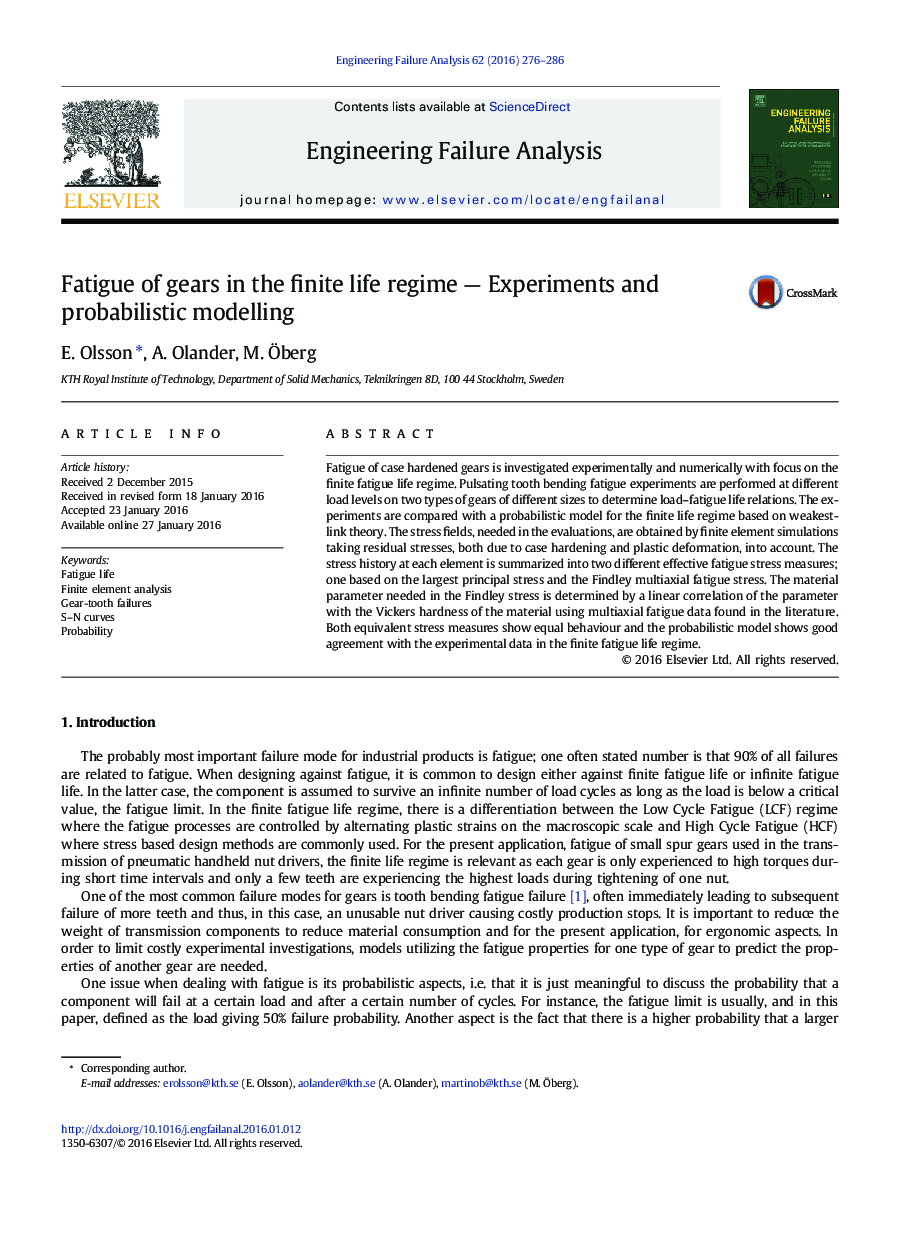| Article ID | Journal | Published Year | Pages | File Type |
|---|---|---|---|---|
| 763325 | Engineering Failure Analysis | 2016 | 11 Pages |
•Fatigue of gears in the finite life regime is studied experimentally and numerically.•A weakest-link model for finite fatigue life is derived.•Parameters in the Findley multiaxial fatigue criterion are linearly correlated with material hardness.•The probabilistic model describes the outcome of the experiments well.
Fatigue of case hardened gears is investigated experimentally and numerically with focus on the finite fatigue life regime. Pulsating tooth bending fatigue experiments are performed at different load levels on two types of gears of different sizes to determine load–fatigue life relations. The experiments are compared with a probabilistic model for the finite life regime based on weakest-link theory. The stress fields, needed in the evaluations, are obtained by finite element simulations taking residual stresses, both due to case hardening and plastic deformation, into account. The stress history at each element is summarized into two different effective fatigue stress measures; one based on the largest principal stress and the Findley multiaxial fatigue stress. The material parameter needed in the Findley stress is determined by a linear correlation of the parameter with the Vickers hardness of the material using multiaxial fatigue data found in the literature. Both equivalent stress measures show equal behaviour and the probabilistic model shows good agreement with the experimental data in the finite fatigue life regime.
